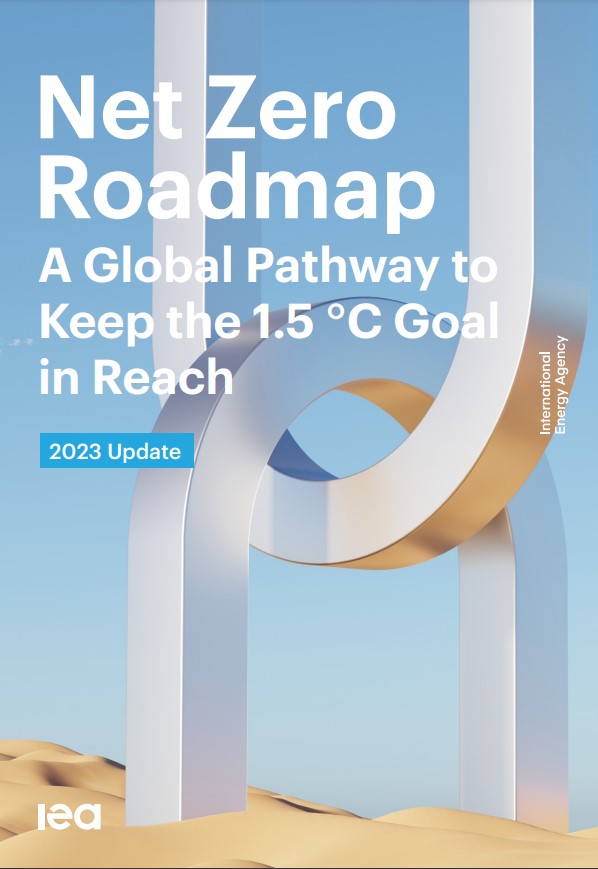
□ 보고서에 따르면 지난해 에너지 부문의 이산화탄소 배출량은 코로나19 팬데믹 이전 수준보다 1% 증가한 370억t으로 사상 최고치를 기록함. IEA는 그동안 청정에너지 확대 및 전기차 판매 증가로 인해 향후 화석 연료 수요가 점차 줄 것으로 전망했으나, 산업화 이전 대비 지구 기온 상승 폭을 1.5도로 제한한다는 목표 달성을 위해서는 더 과감한 조치가 필요하다고 지적함
□ 보고서는 중국을 제외한 기타 신흥 시장과 개발도상국에서 여전히 더 강력한 청정에너지 지원 정책과 국제적 지원이 필요하다고 밝혔음. 또한 청정에너지 기술에 필요한 니켈, 리튬 같은 주요 광물이 특정 국가에 몰려있어 지정학적 긴장이나 기상 이변에 따라 공급 중단의 위험이 증가하므로, 개방형 공급망 구축을 위한 국제 협력이 청정에너지 확대에 필수적이라고 언급함
[출처] IEA '매년 50억t 탄소 제거 피하려면 청정에너지 대폭 늘려야' (2023.09.26.) / 연합뉴스
목차
Foreword 3
Acknowledgements 5
Executive summary 13
1. Progress in the clean energy transition 19
1.1 The context 20
1.2 Bending the emissions curve. 23
1.3 Nationally Determined Contributions and Net Zero Emissions Pledges 31
1.3.1 Nationally Determined Contributions 31
1.3.2 Net zero emissions pledges. 32
1.4 Clean energy technologies 35
1.4.1 Deployment. 35
1.4.2 Supply chains. 41
1.4.3 Costs and performance 48
1.4.4 Innovation 50
2. A renewed pathway to net zero emissions 55
2.1 Overview of the NZE Scenario 56
2.1.1 Scenario design 56
2.1.2 Emissions and temperature trends 62
2.1.3 Key mitigation levers. 66
2.2 Energy trends 72
2.2.1 Total energy supply 72
2.2.2 Fuel supply 75
2.2.3 Electricity generation 79
2.2.4 Final energy consumption 84
2.3
Net zero emissions guide 90
Low-emissions sources of electricity 91
Unabated fossil fuels in electricity generation 92
Road transport 93
Shipping and aviation 94
Steel and aluminium 95
Cement 96
Primary chemicals 97
Space heating 98
Space cooling 99
Energy efficiency and behavioural change 100
Hydrogen 101
Carbon capture, utilisation and storage 102
Bioenergy 103
Energy access and air pollution 104
Fossil fuel supply 105
3. Making the NZE Scenario a reality 107
3.1 Achieving deep emissions reductions by 2030 108
3.1.1 Triple renewables capacity 108
3.1.2 Double the rate of energy intensity improvements 116
3.1.3 Accelerate electrification 124
3.1.4 Reduce methane emissions 129
3.2 Accelerate long lead time options 132
3.2.1 Carbon capture, utilisation and storage 132
3.2.2 Hydrogen and hydrogen-based fuels 136
3.2.3 Bioenergy 141
3.2.4 Infrastructure 146
3.3 Consequences of further delays for the clean energy transition 149
3.3.1 The world has already delayed too long to avoid hard choices. 150
3.3.2 Implications of not raising climate ambitions to 2030 151
3.3.3 What would it take to bring temperatures back below 1.5 °C? 152
3.3.4 Implications for the oil and natural gas industry 156
4. Secure, equitable and co-operative transitions 157
4.1 Introduction. 158
4.2 Energy security 158
4.2.1 Bridging the gap between critical mineral supply and demand 158
4.2.2 Scaling up clean energy technologies and scaling back fossil fuels need to be well synchronised 162
4.2.3 Fossil fuel markets shrink, but vigilance is still needed 163
4.3 Equity. 165
4.3.1 Accelerating clean energy deployment in emerging market and developing economies. 165
4.3.2 Enhancing clean energy affordability 169
4.3.3 Managing the employment transition 172
4.4 International co-operation 173
4.4.1 Addressing financing barriers in emerging economies 173
4.4.2 Enhancing ambitions through the United Nations Framework Convention on Climate Change and Global Stocktake 179
4.4.3 Accelerating clean energy technology deployment 181
Annexes
Annex A. Tables for scenario projections 191
Annex B. Definitions 201
Annex C. References 217
해시태그
관련자료
AI 100자 요약·번역서비스
인공지능이 자동으로 요약·번역한 내용입니다.
Net Zero Roadmap : A Global Pathway to Keep the 1.5 °C Goal in Reach (2023 Update)
(넷제로 로드맵 : 1.5°C 목표 달성을 위한 글로벌 경로 (2023년 업데이트))



